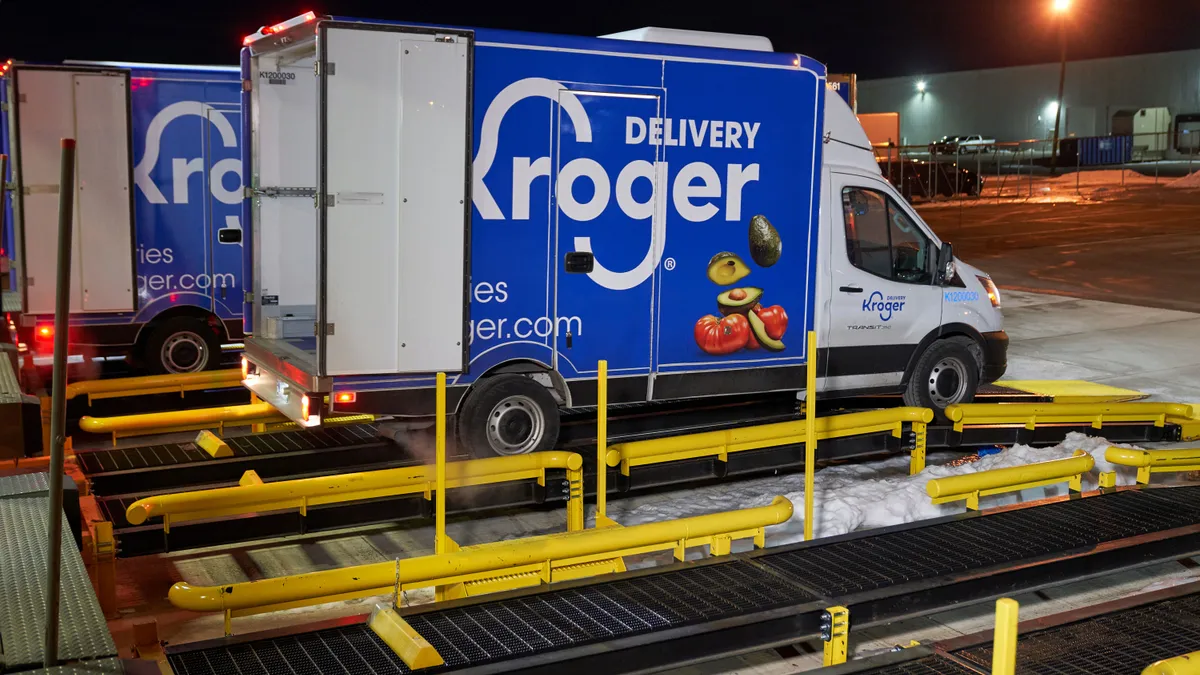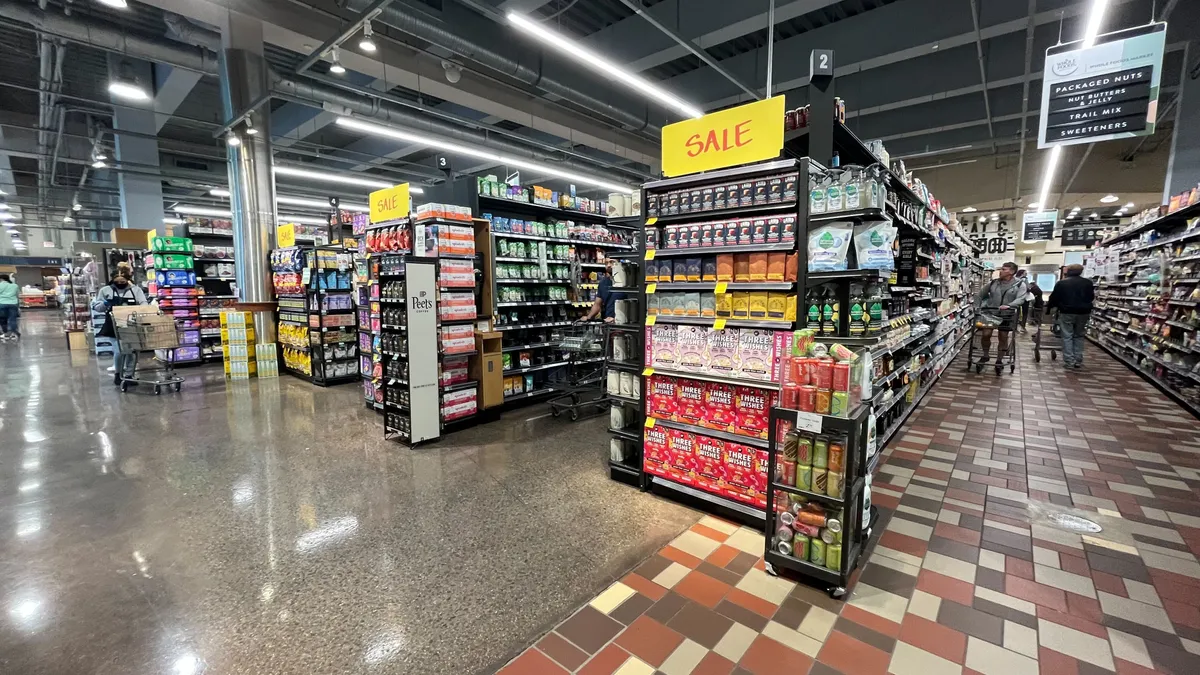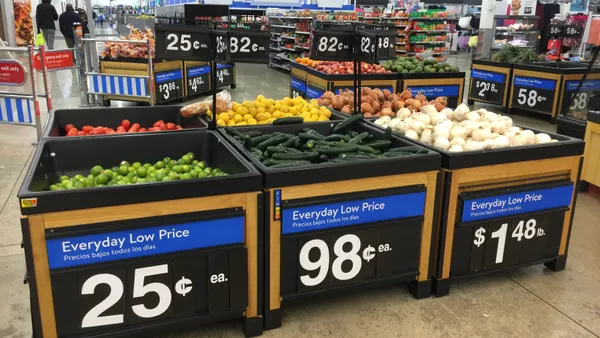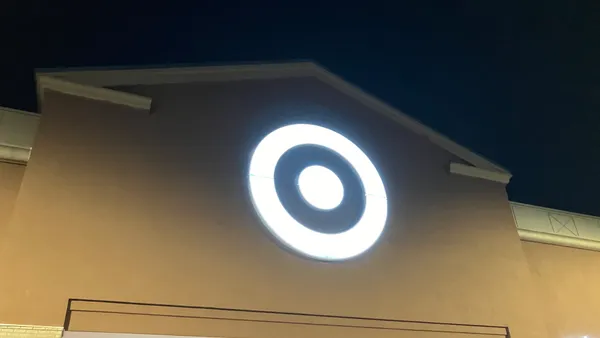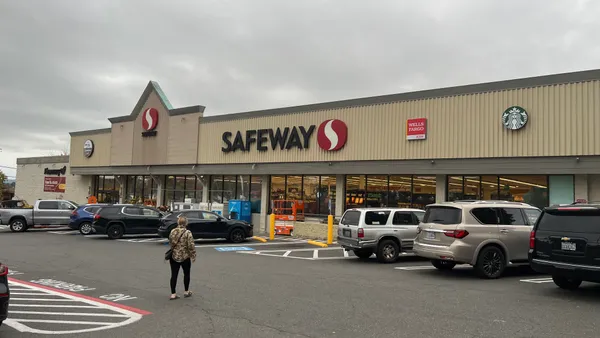Dive Brief:
- Kroger generated slight year-over-year increases in total and same-store sales during its first fiscal quarter, but the company’s profitability declined, the grocer reported Thursday.
- The supermarket operator recorded $45.3 billion in sales in Q1, up a fraction of a percent compared with the same period last year. Same-store sales excluding fuel grew by less than 1 percent — well below the 3.5% clip Kroger posted last year for that metric — while operating profit was off by 12%.
- Kroger is dealing with slower growth as it focuses on trying to overcome efforts by regulators to win a court order to prevent it from merging with Albertsons.
Dive Insight:
While Kroger turned in top-line growth during its most recent quarter that barely moved the needle, Chairman and CEO Rodney McMullen said during an earnings call that the company’s results for the period nevertheless reflected a ”solid start” to the year.
Kroger’s grocery business saw better-than-expected results during Q1, which helped the company deal with performance in its fuel and health and wellness businesses that came in below expectations, McMullen said.
“All in all, the figures show a clear picture of a company that is struggling to generate meaningful growth. It is particularly notable that Kroger’s headline sales figures are below both the prevailing rate of inflation in grocery and ... the overall growth performance of the market,” Neil Saunders, managing director of GlobalData Retail, wrote in an email. “This signifies that both volumes and market share are sliding which is, in turn, an indication that Kroger is on the back foot.”
McMullen said Kroger made gains with customers across the board, with mainstream shoppers accounting for a substantial portion of its household growth. The company saw increased loyalty from premium customers, who he said are spending more on fresh products and trying more higher-end goods. Kroger also drew in more budget-conscious customers during the quarter after losing traction with that group of shoppers last year, he said.
“Our recent improvement on store execution metrics and strong customer trends give us confidence that we are building momentum for a strong back half of the year, and we are well positioned to deliver on our full-year guidance,” McMullen said.
Todd Foley, Kroger’s interim CFO, said the company is reaffirming its guidance for fiscal year 2024, which calls for identical sales growth excluding fuel to fall in the range of 0.25% to 1.75%.
Kroger sees comp sales growth rebound after slump in fiscal 2023
McMullen and Foley said Kroger is focusing on boosting its same-store sales but declined to say when they expect the figure to return to the range of 2% to 4% that the company aspires to achieve. Kroger believes that its capital investments, including remodeling projects and a rising number of new stores, will help the company accelerate growth, McMullen said.
McMullen noted that Kroger intends to press ahead with efforts to draw more shoppers to its pharmacies, adding that a third of the company’s customers are not aware it offers that service in its stores.
While Kroger’s overall growth was under pressure, its online business moved ahead at a brisk rate. The company’s digital sales rose by over 8% during the quarter, with delivery moving ahead by 17%, Foley said.
Meanwhile, the company’s retail media business is on track to increase at least 20% during 2024, with much of that growth expected during the second half of the year, Foley noted.
McMullen noted that Kroger and Albertsons in April revealed an updated divestiture plan with C&S Wholesale Grocers that “directly responds to the concerns raised by federal and state antitrust regulators regarding the original agreement.”
The revised plan, which includes more divested stores and additional assets, bolsters Kroger’s stance as it faces regulatory challenges to the merger and also positions C&S to be a “strong and successful competitor,” McMullen told investors.
“We are prepared to defend our merger because it will produce meaningful and measurable benefits for customers, for associates and for communities across the country. … As union membership continues to decline nationwide, this merger will secure union jobs,” McMullen said.



